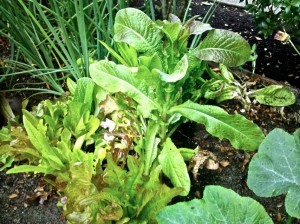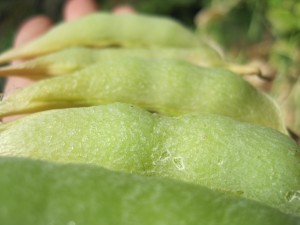After about a month and a half of working with the Seattle Urban Farm Company, I have to say I’ve fallen in love with Seattle, from its inhabitants to its quaint neighborhoods to its dazzling mountain landscapes… but the thing I learned that I would most love to experience is the year-round fresh local produce. New York of course lacks this in its rotation of the four seasons and harsh winters. These urban farmers can enjoy a blossoming garden all year, something I hadn’t been able to imagine besides down in the tropic regions that I got to experience last winter/spring while studying abroad. Instead of the heat and humidity of down there though, Seattle enjoys some warm days, some borderline hot days, and some periods of crisp, moist weather to keep things interesting (some call it gloomy but I can’t say that until I’ve experienced it).
Enough about the weather though. I’ve gained a lot through the days working in the sun and rain with Brad, Colin, and Hilary. My last day was spent with all three of them doing the Mercer Island run, which I can imagine being cumbersome for just one or two people as there are six gardens, most of which require quite a bit of training. It was a warm day, up in the 80s I would guess, and we hustled through all of them. Hilary has been working tirelessly on the photos for the book that Brad and Colin just finished another revision stage for. It will be all about the ins and outs of urban farming and should be ready sometime around the end of this year. She took a bunch of pictures while we harvested, pulled, weeded, planted, munched on, fought with, tousled, teased, and fell into rhythm with each garden. It’s becomes kind of meditative, kind of therapeutic when we work together, weeding especially. And it feels healthy just being surrounded by growth and urging on productivity with our hands and some tools, sweating and using muscles that lie dormant otherwise. I enjoyed going from working in a fast paced restaurant environment to doing maintenance runs with the company, discussing plans and memories, observing and working together. It was incredible to observe the differences in the attitudes and pace just from the difference in context, and it helped to reaffirm why I want to go into agriculture as opposed to corporate business.
I think I achieved most of my goals, from plant identification to learning about the organization of the company. There is a lot of planning that goes into it. I’m glad that I got to attend one of their staff meetings and a consultation to see exactly what those would entail. Having as many clients as they do requires a lot of record-keeping, from hours to produce, and it is improving all the time as they gain more experience. Future plans include having a storefront to sell seedlings and such, adding a whole other aspect to the company. I can’t wait to go back whenever I get a chance and see how they progress.
But onto the next adventure I suppose, with more skills and tools to bring to whatever other situation I am put into. Thank you so so SO much Seattle Urban Farm Company and all the great people I met there! I’ll be back to visit soon I hope….
Keep on growing, Seattle!






 Seedlings almost ready to be transplanted!
Seedlings almost ready to be transplanted!
